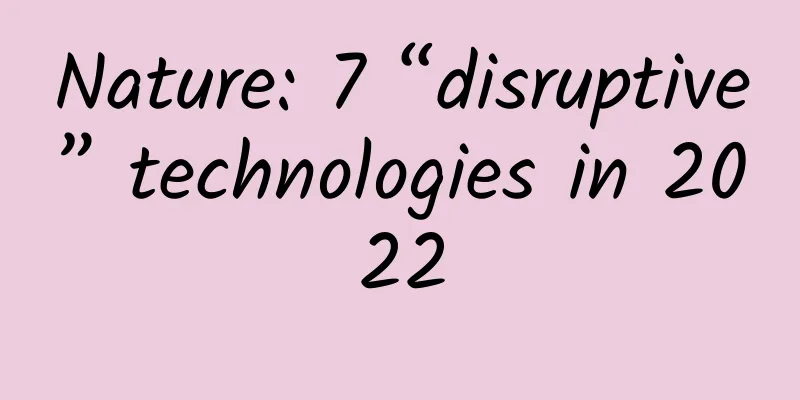Nature: 7 “disruptive” technologies in 2022

|
Author: Wen Lele Recently, Nature reviewed seven technologies that "may have an impact on science in the coming year." These seven technologies are complete genome, protein structure analysis, quantum simulation, precise genome regulation, targeted gene therapy, spatial multi-omics, and CRISPR-based diagnosis. Complete genome In a preprint paper published in May 2021, the Telomere to Telomere (T2T) Collaboration reported the telomere-to-telomere sequence of the first human genome, adding nearly 200 million base pairs to the widely used human reference genome sequence GRCh38 and completing the final chapter of the Human Genome Project. GRCh38 was first published in 2013 and is a valuable research tool and scaffold for mapping sequencing sequences. But they are not long enough to clearly map the highly repetitive genome sequences. Long-read sequencing technology has proven to be a “game changer” for existing technologies. The technology, developed by Pacific Biosciences in the United States and Oxford Nanopore Technologies in the United Kingdom, can sequence tens or even hundreds of thousands of bases in a single read. In 2020, when the T2T collaboration first reconstructed the separate X chromosomes and chromosomes 8, advances in sequencing at Pacific Biosciences had allowed T2T scientists to detect small changes in long repeat sequences. These subtle "fingerprints" make the long, repetitive chromosome segments tractable, and the rest of the genome quickly falls into place. The Oxford Nanopore Technologies platform also captures many DNA modifications that regulate gene expression, allowing the T2T collaboration to map these “epigenetic marks” on a genome-wide scale. Protein structure analysis Over the past two years, experimental and computational advances have allowed researchers to determine protein structures with unprecedented speed and resolution. The AlphaFold2 structure prediction algorithm developed by the British company DeepMind relies on deep learning strategies to infer the shape of a folded protein from its amino acid sequence. Since its public release in July 2021, AlphaFold2 has been applied to proteomics research to determine the structures of all proteins expressed in humans and 20 model organisms, as well as to identify the structures of nearly 440,000 proteins in the Swiss-Prot database. At the same time, improvements in cryo-EM have enabled researchers to experimentally approach the most challenging proteins and their complexes. In 2020, the two teams achieved structural resolution below 1.5 angstroms, determining the positions of individual atoms. Also exciting is a related technique called cryo-electron tomography, which can capture naturally occurring protein behavior in thin slices of frozen cells. Quantum simulation Quantum computers process data in the form of quantum bits. Several research teams have successfully used individual ions as qubits, but their charge makes them difficult to pack in high density. Physicists such as Antoine Browaeys of the French National Center for Scientific Research and Mikhail Lukin of Harvard University in the United States are exploring another approach. The research team used optical tweezers to precisely hold uncharged atoms in tightly packed 2D and 3D arrays, and then used lasers to excite these particles into large-diameter Rydberg atoms, causing them to become entangled with nearby atoms. In just a few years, technological advances have improved the stability and performance of Rydberg atom arrays, and the number of quantum bits has rapidly expanded from dozens to hundreds. Browaeys estimates that such a quantum simulator could be commercially available within a year or two. This work also paves the way for the wider application of quantum computers. Precision genome regulation Although CRISPR-Cas9 technology has powerful genome editing capabilities, it is better suited for inactivating genes rather than repairing them. Liu Ruqian, a chemical biologist at Harvard University in the United States, pointed out that most genetic diseases require gene correction rather than gene destruction. To achieve this goal, Liu Ruqian's team has developed two promising approaches. The first approach, called base editing, combines the catalytically impaired Cas9 with an enzyme that facilitates the chemical conversion of one nucleotide to another. However, currently only specific base-to-base transitions can be achieved using this approach. The second approach, called guide editing, tethers Cas9 to a reverse transcriptase and uses a guide RNA modified to incorporate the desired edits into the genomic sequence. Through a multi-stage biochemical process, these components copy the guide RNA into DNA that ultimately replaces the target genomic sequence. Importantly, both methods cut only one DNA strand, making it a safer and less disruptive process for cells. Targeted gene therapy Nucleic acid-based drugs can have a clinical impact, but there are still many limitations on the tissues to which they can be applied. Most treatments require local administration of drugs or extraction of cells from the patient, manipulation outside the body, and then transplantation back into the patient. Adeno-associated virus is the vector of choice for many gene therapies. Animal studies have shown that careful selection of appropriate viruses, combined with tissue-specific gene promoters, can achieve efficient drug delivery confined to specific organs. However, viruses are sometimes difficult to produce on a large scale and can cause immune responses, undermining efficacy or causing adverse reactions. Lipid nanoparticles are a type of non-viral vector, and several studies published in the past few years have shown the potential to modulate their specificity. For example, the selective organ-targeting technology developed by biochemist Daniel Siegwart and his colleagues at the University of Texas Southwestern Medical Center in the United States helps to quickly generate and screen lipid nanoparticles to find those that can effectively target cells in tissues such as the lungs or spleen. Spatial Multi-omics The development of single-cell omics has made it easy for researchers to gain genetic, transcriptomic, epigenetic, and proteomic insights from individual cells. But single-cell techniques remove cells from their original environment, a process that can miss critical information. In 2016, Joakim Lundeberg's team at the Royal Institute of Technology in Sweden proposed a solution. The team prepared slides with barcoded oligonucleotides (short strands of RNA or DNA) that capture messenger RNA from intact tissue sections so that each transcript sample could be mapped to a specific location in the sample based on its barcode. Since then, the field of spatial transcriptomics has exploded, with several commercial systems now available, and research teams continue to develop new methods to map gene expression with greater depth and spatial resolution. CRISPR-based diagnostics The ability of the CRISPR-Cas system to precisely cut specific nucleic acid sequences stems from its role as a bacterial "immune system" to defend against viral infection. This connection inspired early adopters of the technology to consider its applicability to viral diagnostics. Cas9 is the enzyme of choice for CRISPR-based genome manipulation, but most work on CRISPR-based diagnostics uses a family of targeting RNA molecules called Cas13. This is because Cas13 can not only cut the RNA targeted by the guide RNA, but also perform "parallel cutting" on other nearby RNA molecules. Many Cas13-based diagnostics use reporter RNAs that “tether” a fluorescent tag to a quencher molecule that suppresses fluorescence. When Cas13 recognizes viral RNA and becomes activated, it cuts off the reporter gene and releases the fluorescent label from the quencher molecule, generating a detectable signal. Some viruses release strong signals that can be detected without amplification, greatly simplifying the point-of-care diagnostic process. (Cover image source: Adrian T. Sumner/SPL) China Science Daily (2022-02-23 Page 1 News original title: "Nature: Seven technologies worth paying attention to in 2022") Editor | Zhao Lu Typesetting | Guo Gang |
>>: Are you sure the name Youyouguan is not meant to be cute?
Recommend
Born ugly, locals call it "the most terrifying animal"
What ugly animals have you seen? There is an anim...
Uncle Love's bedroom skills, practical strategies
Uncle Qing's bedroom skills, practical strate...
How to secretly take photos of me at work? This year's "Funny Wildlife Photo Award" is full of emojis!
It's Wednesday, does anyone want to go to wor...
33 data points on Apple in 2014
[[125219]] The technology industry continued to c...
Jack Ma and Zhang Chaoyang, the story of worshipping Buddha and believing in religion
Perhaps it is the end of the year, and the boards...
Traffic generation and promotion: How to find target users before promotion?
Finding target users and conducting targeted oper...
Six major trends in video marketing!
Video content is experiencing unprecedented growt...
Observation on buying traffic on Tik Tok and Kuaishou platforms!
As the current leaders of short video platforms, ...
How do social apps play with “relationships between men and women”? Let’s take a look at these nine dimensions.
social contact? Hook up? In the eyes of many peop...
The latest news on Hohhot’s full lifting of the lockdown in 2022: When will it be lifted?
This round of local epidemic in Hohhot began on F...
The enchanting history of "magic wine": the terrifying liquid that once intoxicated England
William Hogarth, Gin Lane, 1751. © www.metmuseum....
In January 2023, the sales of Wei, Xiao, and Li Auto decreased by 11.9%, 59.6%, and 23.4% year-on-year respectively.
When Tesla cuts its prices, does it also affect t...
Jack Ma's speech in London: China will have 500 million middle class people in 10 years
[[152882]] According to foreign media reports, Al...
Foxconn starts selling used iPhones every Wednesday at 12:00
[[132335]] Yesterday, reporters discovered that F...
Can brown sugar water, spinach, and wolfberry replenish iron? These four foods are the real iron supplements...
Author: Xue Qingxin, registered dietitian Reviewe...



![Anbang Insurance Group Co., Ltd.: More convenient work [WeChat Enterprise Account Case]](/upload/images/67ebf28c47ca7.webp)





